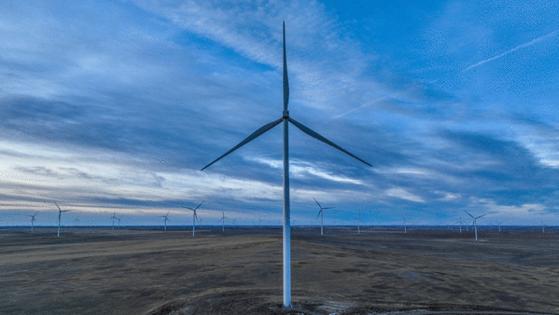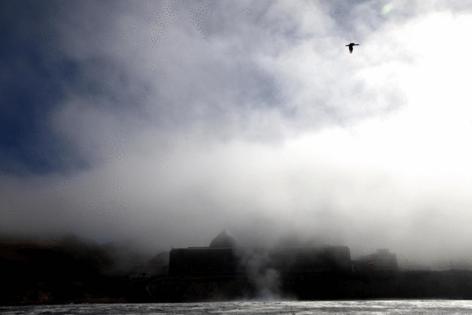Sammy Roth: Jane Fonda's anti-nuclear arguments don't make sense
Published in Business News
Jane Fonda is a powerful, passionate climate advocate. She’s gotten arrested protesting at the U.S. Capitol, raised money to defeat a Big Oil ballot measure in California and written a book about activism. She lives her values.
So I was disappointed by some of the anti-nuclear arguments Fonda made in a recent opinion piece.
Writing for the Philadelphia Inquirer, Fonda slammed a deal to restart Pennsylvania’s Three Mile Island nuclear plant, site of an infamous 1979 partial meltdown that destroyed one of the site’s two reactors. The plant’s owner has agreed to restart the functioning reactor — which shut down five years ago because it was losing money — now that tech giant Microsoft has agreed to buy the climate-friendly electricity to supply its data centers.
It’s no surprise that Fonda isn’t happy. She’s fought nuclear power for decades, rallying against California’s Diablo Canyon plant and starring in a 1979 film,“The China Syndrome,” that warns of nuclear energy’s dangers.
“I understand the temptation to embrace nuclear,” she writes. “We absolutely need to phase out oil, gas, and coal — the fossil fuels overheating our planet — and fast. Any means of achieving that goal deserves consideration.”
Ultimately, though, Fonda doesn’t seem interested in giving nuclear much consideration.
In an argument reminiscent of right-wing talking points against renewable power, she writes that nuclear plants “can only be operated because we, the public, subsidize them lavishly.” Yes, nukes cost more than solar and wind. But we continue to subsidize solar and wind, including through President Biden’s Inflation Reduction Act.
What’s more, solar panels and wind turbines can’t power society 24/7. Even as batteries get cheaper, keeping the lights on without fossil fuels isn’t yet possible without round-the-clock sources of climate-friendly electricity.
Nuclear reactors aren’t the only option, experts say — but they are one viable possibility. So Fonda definitely isn’t correct when she concludes that “there isn’t room for both nuclear and renewables in our energy future.”
Fonda also claims atomic energy “isn’t much help against climate change” because nuclear plants take too long to build — 15 years for the nation’s most recent reactor, at a time when scientists say we must cut heat-trapping carbon emissions more than 40% globally by 2030 to keep planetary warming below 1.5 degrees Celsius.
“Solar plants take about four years to get up and running. Wind turbines about the same,” Fonda writes.
The problem is, building solar and wind farms isn’t always so fast, at least not anymore — not when you account for the nation’s increasingly crowded electric grid; environmental conflicts involving Joshua trees and rural towns; and contentious debates over the best use of America’s public lands. I’ve reported on proposed solar farms, wind farms and power lines that have been in the works for five years, 10 years, even 15 years in extreme cases.
And beyond 2030, we need to keep cutting emissions for decades. So whether we’re talking about continuing to operate existing plants such as Diablo Canyon or building new ones — mostly likely small modular reactors, like the one Bill Gates is bankrolling in Wyoming— there’s still time for nuclear to contribute to climate progress.
If Fonda and others feel the risks of a meltdown outweigh the benefits of 24/7 clean energy, that’s their call. I’m aware that I’m writing these words as a 32-year-old who wasn’t around for the Three Mile Island disaster.
I’m also aware that uranium extraction for nuclear energy has a long history of polluting groundwater, including on Indigenous lands, and that the U.S. still doesn’t have a long-term solution for storing radioactive waste.
But one of the lessons I’ve learned reporting on energy for 10 years is that no power source is perfect.
Everywhere you look, there are value judgments. What’s worse: leveling a Joshua tree forest to build a solar farm or offering rooftop solar incentives that drive up electric rates for everyone else? Should we put wind turbines on land, where they kill birds, or offshore, where they might harm marine life? How about the fact that lithium, a key ingredient in the batteries that store solar and wind power, can fuel environmentally destructive mining?
These are hard questions. The climate crisis is a hard problem. It gets even harder when you start boxing yourself in with worldviews that formed decades ago, or with confirmation biases that drown out inconvenient truths.
I’m not here to tell Jane Fonda she’s wrong about nuclear. (Although if you’d like to chat, Jane, please reach out!)
I am here to ask everyone reading this: Do you have any opinions you’d consider changing if it meant preserving a livable planet, for yourself and future generations? Any habits or lifestyle choices you’d be willing to alter?
If the answer is no, your vision for tackling the climate crisis may need adjustment.
Speaking of which, one last thing: If there’s a good argument to be made against restarting Three Mile Island, I’d say it has to do with what the energy will be used for: data centers. The Electric Power Research Institute projects that data centers operated by Microsoft and other firms could consume up to 9% of U.S. electricity by 2030.
Some of the projected growth is tied to our phones and computers — technology already baked into modern life. But much of it stems from expected demand for energy-hungry artificial intelligence tools such as ChatGPT.
The more climate-friendly energy we devote to AI, the more infrastructure — solar farms, power lines, advanced nuclear reactors — we’ll need to build to power everything else. Even without AI, it’s going to be insanely difficult to build enough power plants and electric lines to fuel all our buildings, cars, computers and factories.
So maybe we should strap on climate-colored goggles before diving headfirst into artificial intelligence.
©2024 Los Angeles Times. Visit at latimes.com. Distributed by Tribune Content Agency, LLC.

















Comments